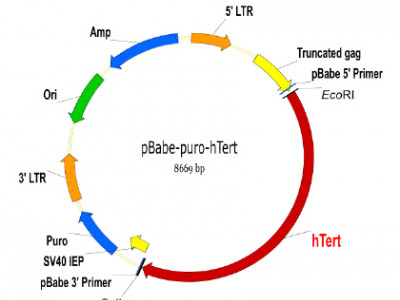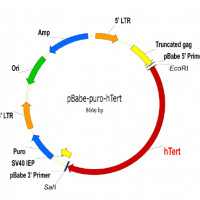It has been well-documented that primary cells only undergo a pre-determined and finite number of cell divisions in culture. After limited population doublings, primary cells enter a state where they can no longer divide. This state is called replicative senescence. Replicative senescence is marked by distinct changes in cell morphology, gene expression, and metabolism. Morphological changes are often associated with increased cell size and the development of multiple nuclei. Changes in metabolism are commonly associated with increased lysosomal biogenesis as evidenced by over-expression of endogenous β-galactosidase. pBABE-puro-hTERT is a retroviral vector for reversible immortalization of human primary cells by over-expression human TERT.



